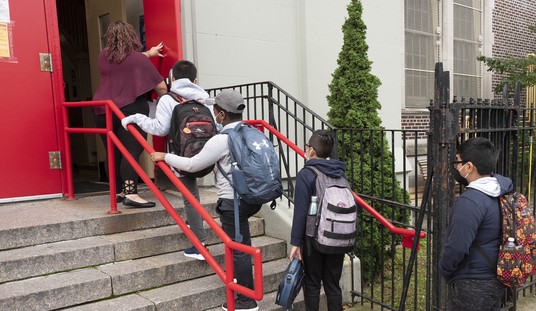I used to work at Freddie Mac (Federal Home Loan Mortgage Corporation), in the late 1980s and early 1990s. These days, I like to joke that when I worked there, nobody had ever heard of them, because the place ran so smoothly that they were never in the news.
Recently, Freddie Mac and its big sister, Fannie Mae (Federal National Mortgage Association), have been in the news too much. On Sunday, U.S. Treasury Secretary Henry Paulson issued a statement that his agency, along with the Federal Reserve Board and other agencies, had developed a plan for “maintaining confidence” in the two government-sponsored enterprises (GSEs). The plan includes enhanced backing of GSE debt as well as an unusual provision to allow the Treasury to purchase shares of stock in the two companies.
What is the purpose of the Fannie Mae and Freddie Mac? How did they get into trouble? Will the new plan work? As ordinary homeowners and taxpayers, what should we think about the latest developments?
Fannie Mae and Freddie Mac are known as government-sponsored enterprises (GSEs) because they were created by the government and have enjoyed special regulatory privileges. However, they are both privately owned, with shares traded on the New York Stock Exchange.
Fannie Mae was created during the Depression, as an institution that would purchase mortgage loans. At the time, many regional banks failed, and Fannie Mae was like a giant national bank specializing in home mortgages.
Freddie Mac was created in 1970, to address a different problem. California was chronically short of mortgage money, and other states’ lending institutions had excess capital but were precluded by law from lending across state lines. Freddie Mac was chartered to create a “secondary mortgage market,” which would allow a mortgage lender in one state to purchase securities backed by mortgages originated by other lenders in other states. To do so, Freddie Mac guaranteed repayment of the loans.
Neither Freddie Mac nor Fannie Mae originates mortgage loans. As a home buyer, you will never deal directly with a GSE to obtain a loan. Instead, the GSEs buy mortgage loans that are originated by other firms, including banks and mortgage bankers.
As of the late 1970s, most of the mortgage credit in the United States was supplied by savings and loan associations (S&Ls), which are very similar to banks. However, the inflation of the 1970’s wreaked havoc on the highly-regulated S&L industry, leading to its collapse. Fannie Mae and Freddie Mac, with strong encouragement from Congress, stepped in to take mortgage assets off the balance sheets of the S&Ls for a fee. In effect, the GSEs fed off of the carcasses of the S&Ls, and subsequently the GSEs took over the role of being the chief providers of home mortgage credit in the U.S.
Congress and regulators gave the GSEs a regulatory advantage in purchasing investment-quality loans, meaning loans to highly-qualified borrowers making substantial down payments (20 percent of the value of the home to avoid having to pay for mortgage insurance, or 10 percent of the value of the home if additional private mortgage insurance was obtained). Through regulatory differences, primarily in the form of capital requirements, banks were put at a disadvantage relative to the GSEs when it came to holding investment-quality loans.
However, the GSEs have recently suffered large credit losses on loans that were not of investment quality. These low-down-payment loans were similar to the subprime mortgage loans that fueled the boom and bust cycle in housing. It is not clear why the GSEs chose to purchase these loans, since they are outside of the GSE charters. One story has it that they were afraid of losing market share. Another story I have heard is that the GSEs were under pressure from Congress to do more to provide funds for “affordable housing,” and the GSEs interpreted this as requiring more high-risk lending.
As a result of these high-risk loans, the GSEs ran into difficulty, reporting large losses. This in turn made investors nervous, so that the interest rates that the GSEs had to pay to borrow in order to fund their portfolios went up. Historically, the GSEs had been able to pay unusually low interest rates so that they could afford to hold assets with lower rates of return than other institutions, such as banks, could afford.
Once investors lose confidence in a GSE, it can only sell its assets to institutions that have higher borrowing costs, which means that it has to sell them at a loss. As I wrote last Thursday, “Liquidation is not an option.”
In hindsight, Freddie and Fannie were allowed to grow too large. They used political connections to fend off any attempt to rein them in, as can be seen in a 1997 story on James Johnson, then-chairman of Fannie. More on the political/regulatory history of the GSEs can be found in a Washington Post article from July 14th.
The plan that Treasury Secretary Paulson announced on Sunday appears designed to shore up the GSEs and to return to the status quo prior to the recent loss of confidence by investors. In fact, however, I think it is unrealistic and undesirable to return to the status quo.
If you had it to do over again, you would not allow the GSEs to become more than 50 percent of the mortgage market. Instead, you would create a system that diversifies mortgage finance across many institutions. The “regulatory arbitrage” that the GSEs enjoyed should be replaced by a level playing field, which reduces the capital requirements for banks to hold investment-quality loans while increasing the capital requirements for GSEs should they continue to stray out of the arena of low-risk, high-quality mortgages.
In my opinion, the playing field should be leveled as soon as possible so that banks can begin to buy assets from the GSE’s. Let the banks feed off the carcasses of Freddie and Fannie, just as Freddie and Fannie once fed off the carcasses of the S&Ls.
More broadly, the GSE crisis is being discussed in the context of a long debate among economists over the role of markets and regulation in the financial sector. On the Left, Brad DeLong and Paul Krugman are trying to portray the GSEs as innocent victims of the wanton behavior of unregulated mortgage lenders, who fueled the subprime boom. Accordingly, their narrative is one of market failure and the need for more regulation.
Instead, I see the GSE crisis as a failure of central planning. The GSEs were the victim of no one, unless you count the meddling by the Congressional meddlers whom the GSEs needed to please. Anyone could see that the GSE dominance of the mortgage market was unhealthy. But the political process was unable to get the job done. What the central planners tend to forget is that political failure is even more entrenched than market failure.
Many (although not all) of the GSEs’ enablers over the past decade have been Democrats. Most of the calls for reining in the GSEs have come from the Wall Street Journal and from conservative politicians.
The Treasury plan shows that the response to a failure of central planning is likely to be more central planning. Intellectually, those of us who prefer markets have a good case. Politically, we are in the process of getting steamrollered. The Treasury plan is being attached to a housing bill that was rife with corporate welfare and unsound subsidies. It ought to be vetoed, but instead it will be fast-tracked.
As a homeowner and a taxpayer, what you should want to see is a sensible housing finance system, without excessive regulation and without expensive subsidies. Instead, what we are likely to see is much more regulation. To offset the costs of these controls, we also can expect an even more Byzantine structure of government subsidies.









Join the conversation as a VIP Member